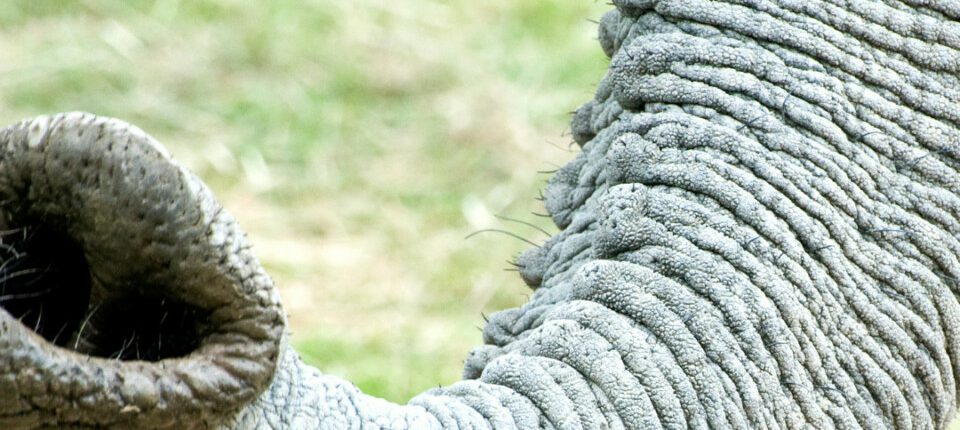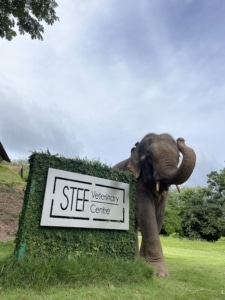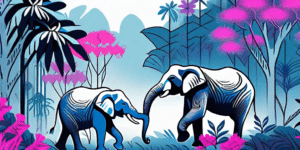Look Closely and You Will See Whiskers on The Tip of an Elephants Trunk
An elephant’s trunk is arguably the most characteristic feature of these large mammals. The trunk forms within the womb by merging an elongated nose with the upper lip and is first recognizable after around 90 days gestation. When the calf is born it is covered with a layer of hair known as “lanugo”. The majority of this hair sheds off before birth and continues to fall off as the calf grows. It is believed this hair is for thermoregulation and allows for extra sensation, helping the calf navigate its environment. However, some hairs remain on the elephant, particularly around the head, lips and particularly on its trunk.
An elephant’s trunk has over 40,000 Muscles and 150,000 individual muscle units. It is extremely dexterous and acts just like a grasping hand. African elephants have two dorsal fingers to their trunk which acts like two fingers and works in a pinching potion whereas the Asian elephant has only one dorsal finger to their trunk and will curl their trunk around an abject to grasp it. Elephants use their trunk to frequently contact their environment and use the highly sensitive tip of their trunk to build up a picture of their physical world.
One of the more overlooked features of this amazing piece of evolutionary equipment are the whiskers. If you look closely, you will see that the end or tip of an elephant’s trunk is covered in small hairs, known as whiskers. Whiskers or vibrissae are distinct from normal hair due to having a blood sinus associated with their follicle. The whiskers are the main structure for the transmission of tactile stimuli in the trunk, which means they are incredibly sensitive, which is one of the reasons an elephant’s trunk is capable of such precise manipulation. Whisker density is higher at the tip of the trunk and African Elephants have more whiskers on the tips of their trunks than Asian elephants. The whisker length also differs in both species depending on the usage as both species grasp differently and so wear down their whiskers accordingly, meaning that they are one of the only mammals to have asymmetrical facial whiskers.





